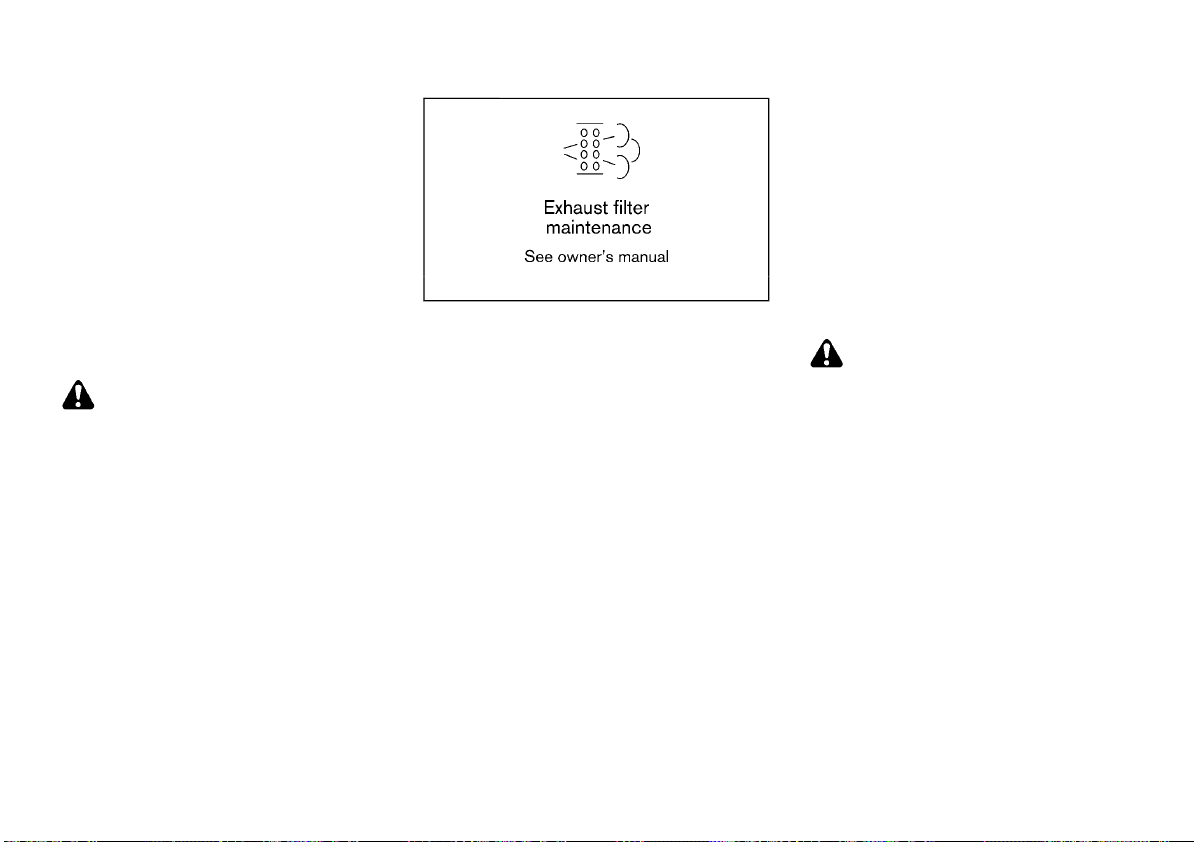Loading ...
Loading ...
Loading ...

(301,1)
[ Edit: 2020/ 8/ 19 Model: T32-A ]
GASOLINE PARTICULATE FILTER (GPF) (if
equipped)
GUID-4F97B745-EA41-48D9-925A-D7A98D499120
If your vehicle is fitted with a gasoline engine, a
Gasoline Particulate Filter (GPF) may be fitted
as part of the emission control system.
The GPF filters carbon particles from the
exhaust gas, thus reducing the emission of
soot to the environment.
Under normal driving conditions, the accumu-
lated carbon particles in the GPF are burned-off
regularly, thus emptying the filter from carbon
particles. In this way, the GPF is “regenerated”
and again fully operational to filter out the
carbon particles from the exhaust gas as
intended.
CAUTION:
. Under certain less-favourable driving
conditions, the GPF may become satu-
rated/clogged because these driving
conditions prevent automatic regenera-
tion of the filter. In this case, a message is
displayed in the vehicle information dis-
play and the Malfunction Indicator Light
(MIL - orange) or Malfunction Warning
Light (MWL - red) may come on (although
there may be other engine management
malfunctions that may cause this light to
come on). Also, GPF saturation/clogging
may result in reduced engine perfor-
mance and engine speed limitation.
WAF0107X
. When the “Exhaust filter maintenance”
message appears, provided that legal
and safety conditions allow, the vehicle
should be driven at a speed of over 50
km/h (30 MPH), with gentle use of the
accelerator pedal, until the message is no
longer displayed.
. Should the MIL or MWL come on for any
reason, or if the “Exhaust filter mainte-
nance” warning message appears in the
vehicle information display, always visit a
NISSAN dealer as soon as possible. Ex-
tended driving with the MIL/MWL illumi-
nated may lead to damage to the engine
control system.
What you can do yourself to prevent the GPF
from becoming saturated/clogged:
. Avoid repeated and frequent short jour-
neys in which the engine does not reach its
normal operating temperature.
. Regularly drive the vehicle at speeds over
60 km/h (37 MPH) for an extended period of
time (more than 30 minutes).
TURBOCHARGER SYSTEM (if equipped)
GUID-AF1E7E00-C55E-40C4-97E9-3664A44629F7
The turbocharger system uses engine oil for
lubrication and cooling of its rotating compo-
nents. The turbocharger turbine turns at ex-
tremely high speeds and it can reach an
extremely high temperature. It is essential to
maintain a clean supply of oil flowing through
the turbocharger system. A sudden interrup-
tion of oil supply may cause a malfunction in
the turbocharger.
To ensure prolonged life and performance of
the turbocharger, it is essential to comply with
the following maintenance procedure.
CAUTION:
. Change the engine oil according to the
recommended intervals shown in a se-
parate maintenance booklet.
. Use only the recommended engine oil.
See “Recommended fluids/lubricants and
capacities” (P.9-2).
. If the engine has been operating at high
rpm for an extended period of time, let it
idle for a few minutes prior to turn off.
. Do not accelerate your engine to high
rpm immediately after starting it.
TIRE PRESSURE MONITORING SYSTEM
(TPMS) (if equipped)
GUID-B1F2EA48-8821-41F0-BDC2-29C23573CEE3
Each tire, including the spare (if provided),
should be checked monthly when cold and
inflated to the inflation pressure recommended
by the vehicle manufacturer on the vehicle
placard or tire inflation pressure label. (If your
vehicle has tires of a different size than the size
indicated on the vehicle placard or tire inflation
pressure label, you should determine the prop-
er tire inflation pressure for those tires.)
Starting and driving 5-9
Condition: 'Except for China'/
Loading ...
Loading ...
Loading ...